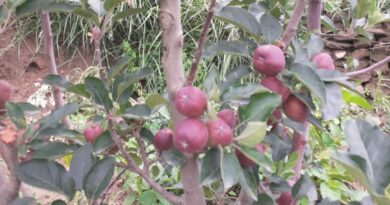Himachal’s Green Revolution: How Vegetable Farming Is Transforming Rural Livelihoods
In the heart of the Himalayas, a quiet yet powerful transformation is unfolding across Himachal Pradesh’s agricultural landscape. Farmers, once reliant on traditional staples like wheat, maize, and rice, are now embracing high-value vegetable farming—and the results are nothing short of remarkable.
Shift Toward Profitable Cash Crops
Driven by changing consumer preferences and rising market demand, Himachal’s farmers are pivoting to commercial crops such as potatoes, peas, cauliflower, and French beans. According to the Agriculture Department’s Rabi season report for FY 2025–26, vegetable cultivation has expanded to 37,450 hectares, with a projected yield of 786,450 metric tons—a significant jump from previous years.
Potato farming alone has seen a boost, with the area increasing from 2,800 to 4,000 hectares, and expected production rising from 35,000 to 52,000 metric tons.
Decline in Traditional Crop Cultivation
As vegetables gain ground, the area under wheat and barley cultivation is shrinking. Wheat acreage has dropped from 340,000 to 322,000 hectares, and barley from 19,500 to 18,000 hectares over the past four years. Farmers are finding that vegetables offer faster returns, better pricing, and more reliable market access.
Mandis and Market Access Fuel Growth
The development of agricultural mandis and improved transport infrastructure has empowered even small-scale farmers to thrive. The Dhalli vegetable market in Shimla alone handles over 3.5 lakh quintals of produce annually, generating a turnover of ₹1,500–2,000 crore. Vegetables are shipped to major cities like Delhi, Mumbai, Kolkata, and Ahmedabad, meeting nationwide demand.
Farmer Voices: Real Stories of Success
Rohit Thakur, a veteran trader at Dhalli mandi, shares:
“Back in 2000, we saw just 1 lakh quintals of vegetables. Today, it’s over 3.5 lakh. Farmers bringing just a few sacks of peas are earning ₹60,000 to ₹1 lakh. Vegetable farming is a game-changer.”
With green peas selling at ₹100–130/kg, farmers are reaping substantial profits. In contrast, crops like maize struggle due to low yields and limited market access.
Himachal’s Vegetables: Flavorful, Fresh, and Chemical-Free
Himachal’s vegetables stand out for their minimal chemical use and distinct taste, making them highly sought after in urban markets. As summer approaches, sowing of peas, French beans, and cauliflower begins in December to meet seasonal demand.
Nationwide Supply Chain Expansion
Vegetables from Himachal are now reaching kitchens across Kolkata, Chennai, Gujarat, Maharashtra, Uttar Pradesh, and Punjab. With ongoing mandi expansions and government support, farmers are gaining new markets and stronger financial stability.



